1. Risk Context Identification
1.1. Horizon scanning
1.2. PEST analysis
1.2.1. variants
1.2.1.1. DESTEP
1.2.1.2. PESTLE
1.2.1.3. PESTEL
1.2.1.4. STEEPLE
1.2.1.5. STEEPLED
1.3. Stakeholder analysis (category)
1.3.1. RACI
1.3.1.1. variants
1.3.1.1.1. RACI
1.3.1.1.2. RACI
1.3.1.2. alternatives
1.3.1.2.1. RASCI
1.3.1.2.2. RACI-VS
1.3.1.2.3. RACIO
1.3.1.2.4. DACI
1.3.1.2.5. RAPID®
1.3.2. Staholder Map
1.3.3. Influence / Interest matrix / Power-impact matrix / Power-impact grid
1.3.3.1. Example #1
1.3.4. Commitment planning chart
1.3.4.1. Example #1
1.4. SWOT analysis
1.5. Probability impact grid
1.5.1. a.k.a. Risk Matrix
2. Risk Identification
2.1. Brainstorming
2.2. Cause and effect diagram
2.2.1. a.k.a. Ishikawa diagram
2.2.2. a.k.a. Fishbone diagram
2.2.3. variation
2.2.3.1. Cause and effect diagram with the addition of cards (CEDAC)
2.3. Fault Tree Analysis (FTA) or Event Tree Analysis (ETA)
2.4. Failure Modes and Effects Analysis (FMEA)
2.5. Group techniques
2.5.1. Brainstorming
2.5.2. Nominal group
2.5.3. Delphi
2.5.3.1. variation
2.5.3.1.1. Wideband Delphi
2.6. Hazard Analysis (HAZAN) e Hazard and Operability Studies (HAZOP)
2.7. Information Gathering Techniques
2.8. Interview with experts
2.9. Life Cycle Cost Analysis
2.10. Periodic Risk Review
2.11. PERT
2.12. Project Risk Ranking
2.13. Project Cost Overruns monitored by means of budget
2.14. Project Time Overruns Monitored by means of schedule
2.15. Project Raw Data
2.16. Risk Checklist
2.16.1. e.g.
2.16.1.1. Facilitated Risk Analysis Process (FRAP) by Thomas R. Peltier
2.17. Risk Register, Risk Log, Risk Documentation Form or Risk Management Ledger
2.18. Questionnaires and interviews
2.19. Weighting
3. Risk Analysis and Evaluation
3.1. Clusters Analysis
3.2. Critical Path Method (CPM) or Critical Path Analysis (CPA)
3.3. Group techniques
3.3.1. Brainstorming
3.3.2. Nominal group
3.3.3. Delphi
3.3.3.1. variation
3.3.3.1.1. Wideband Delphi
3.4. Risk Register, Risk Log, Risk Documentation Form or Risk Management Ledger
3.5. Probability and Impact Grids, Risk Matrix or Risk Map
3.6. Project Risk Ranking
3.7. Probabilistic analysis and Reliability Analysis
3.8. Monte Carlo simulation
3.9. Multi-criteria analysis with fuzzy logic
3.10. PERT
3.11. SWOT
3.12. Analytic Hierarchy Process
3.13. Weighting
4. Planning and Implementing Actions against the Risk
4.1. 5W2H
4.2. 5W3H
4.3. 6W2H
4.4. 6W3H
4.5. Action Plan or Mitigation Plan with Avoiding, Transferring or Mitigating actions against risk
4.6. Continuous review of the Action Plan or the Mitigation Plan with Avoiding, Transferring or Mitigating actions against Risk
4.7. Contract as a tool for mitigation, transfer and elimination of risk
4.8. Design Flexibility
4.9. Contingency plan
4.10. Risk Owner definition
4.11. Planning and Re-planning of the project with optimized resource allocation
4.12. SWOT
5. Risk Monitoring
5.1. Customer satisfaction survey
5.2. Balanced Score Card (BSC)
5.3. Earned Value Management (EVM) and Earned Value Analysis (EVA)
5.4. Extended Balanced Score Card (EBSC)
5.5. Key Performance Index (KPIs)
5.6. Key Performance Indicators (KPIs)
5.7. Key Risk Indicators (KRIs)
5.8. Monitoring by means of Milestones
5.9. Organisational structure of Risk monitoring
5.10. Periodic risk review
5.11. PERT
5.12. Project Cost Overruns monitored by means of budget
5.13. Project Raw Data
5.14. Project Time Overruns monitored by means of schedule
5.15. Quality control
5.16. Reported Monitoring of Project Risks, including Status Risks Report and Status Actions Taken Against Risks
5.17. S-Curve
6. Communication and Integration in the Project Risk Management Process
6.1. Communication practices
6.2. Integration practices
6.3. Knowledge management
6.4. Report of Situation of Actions Against Risks
6.5. Risk Awerness programs
6.6. Stakeholders' behaviours and expectations management
6.7. Training and Capacity
7. Supportive practices of the Project Risk Management Process
7.1. Benchmarking
7.2. Document Review
7.3. Human Resources Management practice
7.4. Periodic Risk Meeting or Periodic Project Meeting
7.5. Project Risk Management Maturity Analysis
7.6. Prototype, Mock-up
7.7. Quality
7.7.1. Total Quality Management (TQM)
7.7.2. EFQM
7.7.2.1. EFQM Excellence Model
7.7.3. ISO 9001
8. Risk Prioritization
8.1. Risk prioritization goes beyond risk ranking in that it compares scenarios (combinations of specific commodities, hazards, and control measures) using multiple criteria, and not just the public health risk
8.2. Prioritizing risk using probability and impact
8.2.1. Probability-impact picture (PIP)
8.2.1.1. Example #1
8.2.2. Probability-Impact Matrix (PIM)
8.2.2.1. Example #1
8.2.2.2. PIM extension using sliding windows
8.2.2.2.1. Example #1
8.2.3. Expected Value
8.2.3.1. Example #1
8.2.4. Variance / standard deviation
8.2.4.1. Example #1
8.3. Prioritizing risk using multi-attribute techniques
8.3.1. Generalised multi-attribute risk prioritisation
8.3.1.1. Example #1
8.3.2. Bubble chart
8.3.2.1. Example #1
8.3.2.2. Example #2
8.3.3. Risk prioritisation chart
8.3.3.1. Example #1
8.3.4. Uncertainty-importance matrix
8.3.4.1. Example #1
8.3.5. High-level risk models
8.4. Prioritizing risk using quantitative approach
8.4.1. Prioritisation techniques based on quantitative modelling
8.4.2. Simple quantitative models
8.4.3. Increasing detail and complexity in quantitative risk models
8.4.4. Component risks within an activity / cost item
8.4.5. Schedule risk analysis
8.4.6. NPV risk model
8.4.7. Simple project risk re-estimating model developed from a portfolio perspective
8.4.8. Influence diagrams and system dynamics
8.4.9. Monte Carlo output statistics
8.4.10. Links with other risk prioritisation techniques
9. This freeware, non-commercial mind map was carefully hand crafted with passion and love for learning and constant improvement ... (please share, like and give feedback - your feedback and comments are my main motivation for further elaboration. THX!)
9.1. Questions / issues / errors? What do you think about my work? Your comments are highly appreciated. Please don't hesitate to contact me for :-) Mirosław Dąbrowski, Poland/Warsaw.
9.1.1. http://www.miroslawdabrowski.com
9.1.2. http://www.linkedin.com/in/miroslawdabrowski
9.1.3. https://www.google.com/+MiroslawDabrowski
9.1.4. https://play.spotify.com/user/miroslawdabrowski/
9.1.5. https://twitter.com/mirodabrowski
9.1.6. miroslaw_dabrowski
